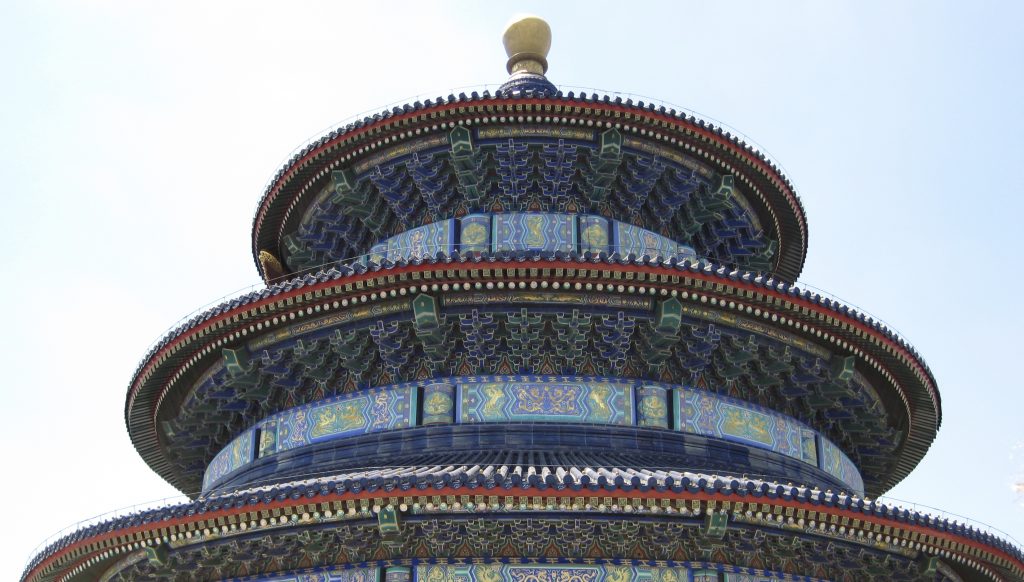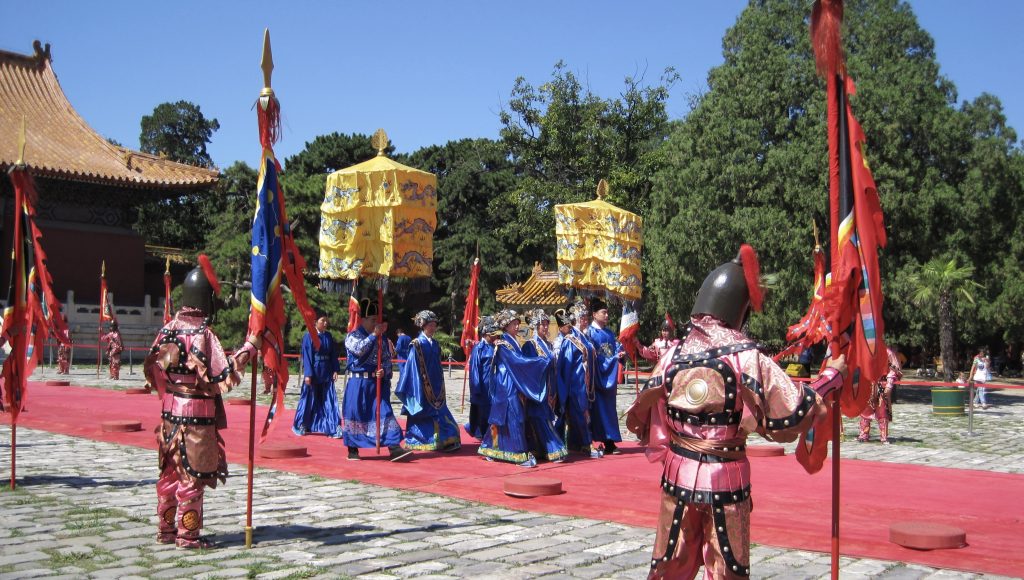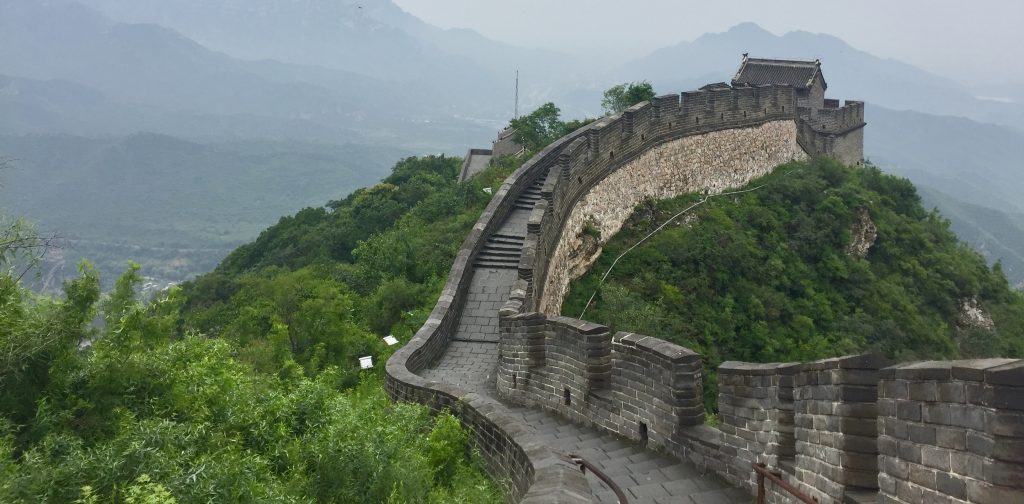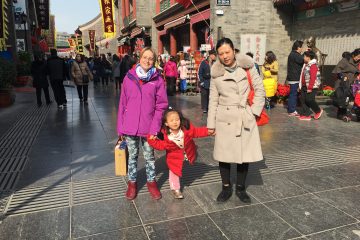Introduction
The Temple of Heaven in Beijing sits in the centre of a beautiful park in the Southeast of the city and makes for a lovely afternoon stroll. You can enjoy the peaceful surroundings as well as admire beautiful examples of traditional Chinese architecture.
Don’t miss
Hall of Prayer for Good Harvests
The central Hall of Prayer for Good Harvests is the main, and oldest, attraction, a spectacular wooden triple-gabled circular building with important symbolic architectural features from the Ming dynasty. Its round shape set in a square yard symbolises the connection of heaven (round) and earth (square). Additionally, the layers of pillars inside the hall symbolise the four seasons, twelve months and twelve hours of traditional Chinese timekeeping. Finally, the colour scheme (blue, yellow and green) represents the heaven and earth.
Circular Mound Altar
The Circular Mound Altar is where sacrifices were made every Winter Solstice during the Ming and Qing dynasties. The design of the altar means that the speaker standing on the Heaven’s Heart Stone in the centre will have their voice amplified to the audience and up to heaven.
Imperial Vault of Heaven
Similar in appearance to the Hall of Prayer for Good Harvests, the Imperial Vault of Heaven was actually the storehouse of the gods’ tablets. Of particular interest is the ‘echo wall’ that surrounds it – whisper something on one side and your friend at the other can hear! Whispering at the echo wall has become a very popular tourist activity, so get there early to avoid the crowds.
Pavilion of Longevity
This quiet double-peaked pavilion was relocated to the Temple of Heaven park in 1975 from Zhongnanhai, where it was originally constructed in the 1700s. You can enjoy the intricate paintings and details without the crowds that surround the more famous sights.
Palace of Abstinence
Here the emperor fasted before ceremonies, abstaining from food, music, sex and politics to demonstrate his piety. Inside the palace walls you can admire beautiful landscape gardens and the ancient bell which would be rung during ceremonies to signal the start or end of the fasting period.
Nine Dragon Tree
Nine is a particularly auspicious number in Chinese culture, symbolising heaven and used on earth to represent high stature. The gnarled shape of this 500-year-old tree is said to represent the bodies of dragons, also highly auspicious and giving the tree its name.
People Watching
The park is an insight into Chinese culture just in itself – being very popular with local people for dancing, singing, sports and board games. Come in the early mornings to spot locals enjoying their morning exercises and dance routines.
Practical info
Tickets: 10-15 RMB (park) / 30-35 RMB (all-inclusive ticket).
Opening hours: 6:30 – 22:00 (winter), 6:00 – 22:00 (summer).
Recommended visit: 2 hours.
Transport: get off the bus at one of the TianTan gates (天坛东门/天坛西门/天坛北门) or take subway line 5.
Nearby

Temple of Heaven 天坛公园
Temple of Heaven 天坛公园

Ming Tombs 明十三陵
Ming Tombs 明十三陵

Juyongguan Great Wall 居庸关长城
Juyongguan Great Wall 居庸关长城



0 Comments